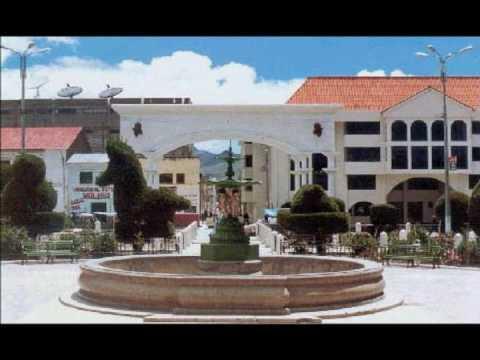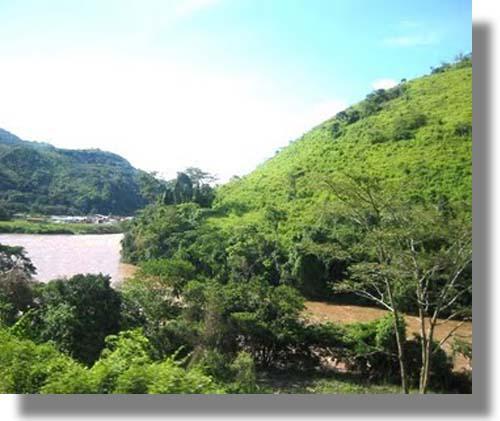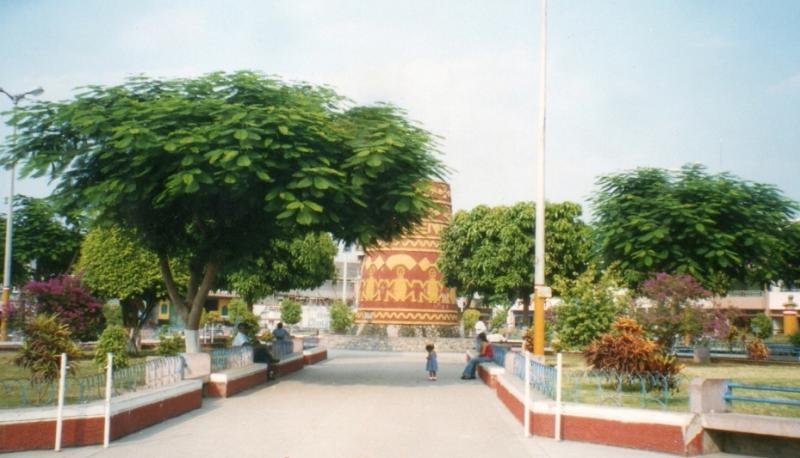Juanjui, San Martin, Peru
Suggest Place to Visit
1078
Track to location with GPS |
 |
The Spanish captain José Gaspar López Salcedo founded this city on September 24, 1827 with the name of Juanjui, a contraction of ´´Juan Huido´´.
The ceremony was carried out together with the most notable neighbors in the place that from that moment would be called La Merced street in homage to the Virgen de las Mercedes (name by which she is known in the place to Santa María de la Merced ), on whose festival what is now the city of Juanjui was founded. The original Juanjui population was basically formed by Lamista immigrants from the end of the 18th century and the first decades of the 19th century.
It is said that the pioneer of these immigrants was an Indian named Juan, who fled from Lamas, either because of the mistreatment received or persecuted by the missionaries' justice. He came to visit these territories and to live with the people of Chacho. After a few years he returned to Lamas and brought with him his family and some other families who were attracted by the references to the abundance of wild animals. This immigration was further intensified by independence. By then, the Chacho settlement was already known in Lamas as the lands of ´´Juan Huido´´, with this more Lamista immigrants arrived. Over the years, Juan Huido derived the name Juanjui to designate these territories in some way. In addition to the lamista, white and mestizo Indians from various places such as Cajamarca, Chachapoyas, Moyobamba and Rioja, the settlement of Juanjui and the province began, a process that continued during the last decades of the 19th century and whose degrees of intensity gradually decreased during last century.
The current geographical location of Juanjui, as a city, is due to its founder, the Spanish José Gaspar López Salcedo who arrived in Peru in 1817 accompanied by another Spanish military man named Pedro Vásquez. From sources of Gaspar López's great-great-grandchildren it is known that when the liberating forces of General José de San Martín disembarked, the then Governor of Trujillo, José Bernardo de Torre Tagle, decided to bow to the independence cause by revealing himself against the authority of the King of Spain and declaring the independence of Trujillo on December 29, 1820. Torre Tagle decided to discharge his troops and have them choose the cause they would defend. Among these was the Spaniard Gaspar López, who decided to continue faithful to the royal cause, marching along with some men to Chachapoyas where the royalist armies were reorganized to confront the patriotic general Álvarez de Arenales. The confrontation took place on June 6, 1821 in the battle of Higos Urco where the royalists were defeated and disorganized, that is when López Salcedo, Pedro Vásquez and some other royalists decided to continue fighting for the royalist cause and marched towards Moyobamba with the hope of finding new forces to join, a situation that did not prosper given that upon arriving in this city they encountered a fierce patriot resistance; months later, all this would become the declaration of the independence of Moyobamba that occurred on August 19, 1821, a fact that discouraged and definitively demolished the monarchical dreams of those Spanish soldiers.
Disappointed, López Salcedo decides to abandon his arms and look in the tranquility of the city of Lamas for the beginning of a new life. Thus, in this city he married and dedicated himself to agricultural activities. When interacting with the working people of the place, it is reported the existence of the Chacho hamlet on the banks of the Huallaga River, only three days' walk from Lamas. They told him about the abundance of fish and animals in the forest, which gave birth to his adventurous spirit. Very soon he decided to travel to the place in the company of friends, convinced of the reality of the versions that spoke of the abundance of edible resources, after which he made two more trips, in the last he decided to do it with his wife and Peruvian son, with the intention to stay there.
It was the year 1826, already forming part of the population of Chacho, he realized that the ideal place to expand the town was the pampa near the left bank of the Juanjuicillo ravine, but the curaca "Llullunco" was strongly opposed to this . López Salcedo had to wait for the curaca to die to convince people of the need to relocate the town with a view to future development. The task lasted many months, due to the fact that trees had to be felled, after which the quadrilateral of what would become the Plaza de Armas was drawn, dividing the surrounding land and nearby blocks. The chapel was founded in the place where the former Lux Cinema is now located and there the founding ceremony of the new city was held on September 24, 1827.
The city of Juanjui is the capital of the province. The province of Mariscal Cáceres is located in the eastern part of the Department of San Martín, in this province is the Río Abiseo National Park and where the Ruins of Gran Pajaten are located.
It limits to the north with the department of Amazonas, to the east with the provinces of Huallaga and Bellavista, to the south with the provinces of Tocache and Alto Huallaga and to the west with the Department of La Libertad.
This province has a temperate, warm sub tropical climate, the average temperature is 22.5º C, it varies between 38º C and 12.5º C.
History
Many peoples flourished on the Abiseo River from its origins to the mouth of the Huayabamba (Kauffman Doig-Ravines). Pajaten represents the cusp of the Huallagina culture and the state closest to the formation of the Andean culture.
During the colony, towns managed by Franciscans (Sión, Ochanache, Pachiza) were organized, which served as headquarters to catechize natives (cholones, hibitos), who inhabit the area.
Juanjui Tourism
Río Abiseo National Park: It was created in 1983 and declared a World Heritage Site by UNESCO in 1990. It has an area of 274,520 hectares. and an altitude that ranges from 350 to 4,349 meters above sea level. The forests are characterized by the marked presence of epiphytic plants, which live on the branches of trees or rocks, as well as orchids and bromeliads. The area contains a great diversity of ferns and medicinal plants such as ojé (Picus antihelmintica), grade blood (Croton lechleri) and cat's claw (Uncaria tomentosa), among others. The fauna is very varied, among the main species of mammals we have the yellow-tailed woolly monkey (Lagothrix flavicauda), the taruca (Hippocamelus antisensis), the spectacled bear (Tremarctos ornatos), the jaguar (Pantera onca), the maquisapa cenizo (Ateles belzebuth). Among the most outstanding birds are the Andean condor (Vultur gryphus), the royal vulture (Sarcoramphus papa), the yellow-headed parrot (Amazona ochrocephala), and also a great variety of fish, reptiles and insects. The park houses more than thirty pre-Columbian archaeological sites of great importance. The Gran Patajén stands out. Video of the Abiseo River National Park
El Breo Waterfall: It is located 80 km south of Juanjui. You can reach this beautiful waterfall through the District of Huicungo (40 minutes by car from Juanjui) and then go by river (5 hours approximately) towards El Breo. Or also directly from Juanjui by river (approximately 3 hours) on a tour where you can appreciate the incomparable beauty of the Peruvian jungle.
Among other tourist attractions we find: Petroglyphs and Caves of Cunchihuillo, Petroglyphs of Panguana, Waterfall in Tobogán, Velo de la Novia Waterfall, Tamshe Natural Pool, Santa Marta Bridge, mouth of the Abiseo River to the Huallaga River, the Pinchudos etc.
Comments
We don´t have yet any comments about:
Juanjui City
Juanjui City
Be the first to leave a comment as it is very important to inform other people
Outros locais a visitar
Within a radius of 20 km from:Juanjui City
Yunguyo, Capital de la Cultura Aymara |
| 0,4 Km |
 |
Parque nacional del río Abiseo |
| 2,2 Km |
 |
Hotel reservation near Juanjui City within a radius of 20 km
No results
Why to book with RUTAS TURISTICAS
The best prices
Our partnerships with the world´s largest operators offer research on the best market prices.
More options
At Rotas Turisticos you can book the hotel, buy the air ticket, book the transfer from the airport to the hotel and vice versa, book the local excursions, rent the car, take travel insurance and consult the places to visit and where to go.
Holiday Tips & Destinations
Hundreds of holiday destinations with all the options that allow you to easily choose the destination that best suits your dream vacation.
RUTAS TURISTICAS
Links





